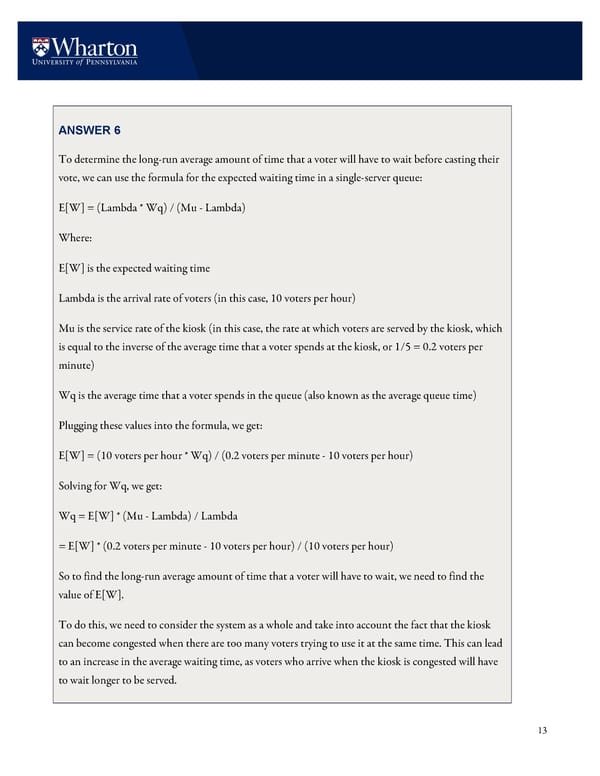13 ANSWER 6 To determine the long -run average amount of time that a voter will have to wait before casting their vote, we can use the formula for the expected waiting time in a single- server queue: E[W] = (Lambda * Wq) / (Mu - Lambda) Where: E[W] is the expected waiting time Lambda is the arrival rate of voters (in this case, 10 voters per hour) Mu is the service rate of the kiosk (in this case, the rate at which voters are served by the kiosk, which is equal to the inverse of the average time that a voter spends at the kiosk, or 1/5 = 0.2 voters per minute) Wq is the average time that a voter spends in the queue (also known as the average q ueue time) Plugging these values into the formula, we get: E[W] = (10 voters per hour * Wq) / (0.2 voters per minute - 10 voters per hour) Solving for Wq, we get: Wq = E[W] * (Mu - Lambda) / Lambda = E[W] * (0.2 voters per minute - 10 voters per hour) / (1 0 voters per hour) So to find the long -run average amount of time that a voter will have to wait, we need to find the value of E[W]. To do this, we need to consider the system as a whole and take into account the fact that the kiosk can become congested wh en there are too many voters trying to use it at the same time. This can lead to an increase in the average waiting time, as voters who arrive when the kiosk is congested will have to wait longer to be served.
 Would Chat GPT Get a Wharton MBA? Page 12 Page 14
Would Chat GPT Get a Wharton MBA? Page 12 Page 14